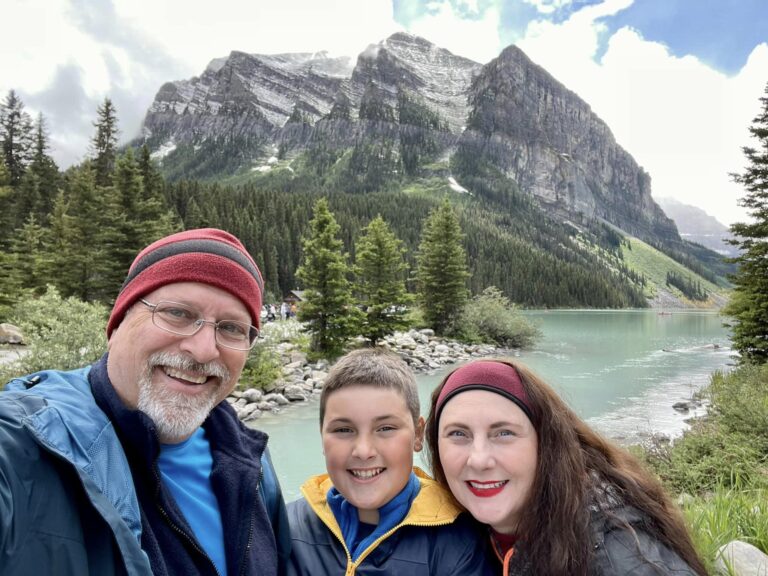We recognize that Disney vacations are not just an investment, but often the highlights of our lives, and we take that responsibility seriously. We want to ensure you have the best vacation experience.
Interested in a job in travel? Click here to learn: How to Become a Disney Travel Agent
Overview
Introduction
Alberta, Canada, is more than just spectacular Rocky Mountain scenery with blue lakes and serrated peaks for hiking and skiing. You'll also find sun-bleached prairie and lunar badlands, excellent museums and interpretive sites that tell the histories of the Plains tribes.
In Alberta's cosmopolitan cities of Calgary and Edmonton, home to many in the oil and gas industry, you'll discover cultural activities, Olympic sites and the Calgary Stampede.
Natural scenery and rural heritage combine with shopping, entertainment and sophisticated international cuisine to make Alberta a prime vacation spot.
Geography
Alberta's terrain varies greatly. It encompasses the jagged ridges of the Rocky Mountains, the parched, gnarled valleys of the southern badlands, pristine alpine lakes and rolling, grassy ranchlands. Large areas in the southeast are flat—part of the Great Plains of North America. In the far north, there are thousands of acres/hectares of dense forest.
History
The Blackfoot and Plains Cree people inhabited the plains of eastern Alberta. Their culture was similar to that of other groups living on the plains—they relied primarily on the hunting of big game, especially bison. The first white explorer to see the area was Anthony Henday, who arrived in 1754.
Although some newcomers (mainly fur traders and missionaries) trickled into the area, the population didn't really begin to grow until Canada's confederation in 1867. The completion of the Canadian Pacific Railway in 1885 boosted the influx of settlers. In 1905, Alberta became a province of Canada in its own right.
Alberta's economy relied on agriculture and trapping at the time it was admitted to the confederation. Its vast resources of petroleum and natural gas were not exploited until after the end of World War II. Today, the citizens of Alberta still cling to the rough-and-tumble image of their ancestors, but in urban areas they've made an aggressive and enthusiastic effort to match the pace of other North American cities.
Snapshot
Alberta's main attractions include soaring mountains, glaciers, turquoise lakes, pristine wilderness, the Calgary Stampede, extreme contrasts in scenery, alpine sports, hiking, Banff and Jasper National Parks, Lake Louise, wildlife, skiing and the West Edmonton Mall (the largest indoor entertainment and shopping center in North America).
Consider Alberta if you love the great outdoors, magnificent scenery and cooler climes. Travelers won't find urban centers comparable with Vancouver or Toronto, but they will find plenty of amenities and attractions in the province's major cities.
Potpourri
There are still unnamed peaks in Jasper National Park.
Alberta's provincial rock is petrified wood, and the provincial mammal is the bighorn sheep. The province's floral emblem is the wild rose, which blooms in woods and along roadsides throughout the province in spring.
If you want to see the wild and wacky, Alberta has loads of weird, larger-than-life icons (sometimes known as "big dumb things"): a 7-ft/2-m statue of Angus Shaw (an early fur trader) in Bonnyville; a 23-ft/7-m pysanka (Ukrainian Easter egg) in Vegreville; an 18-ft-/6-m-tall "bean" known as Pinto Bean in Bow Island; Squirt the Skunk in Beiseker; a 6-ft-/2-m-tall iron rooster in Canmore; 5-ft-/1.5-m-tall Paddy the Beaver in Castor; and a massive pierogi speared on a fork in Glendon. But the wildest and wackiest is a reproduction of the star ship Enterprise in—where else?—Vulcan.
The world's largest glacial erratic (a boulder transported far from its place of origin by Ice Age glaciers) is an 18,000-ton rock near Okotoks, south of Calgary. The appropriately named Big Rock, at 134 ft/41 m long, 59 ft/18 m wide and 30 ft/9 m high, is a sacred site for indigenous people, a provincial historic site and the geographic site for which a well-known craft brewery is named. Geologists believe the Big Rock originated in the mountains near Jasper, more than 186 mi/300 km away.
A good part of the world's whooping-crane population nests in northern Alberta, especially in Wood Buffalo National Park where the world's last natural flock nests every spring. In 1941, there were thought to be only about 20 whooping cranes on Earth. Since then, things have gotten a little better for the whoopers: At last count, the world population was about 686 with about 505 birds living in Wood Buffalo National Park. Nevertheless, whooping cranes remain a very endangered species.
Alberta has sand dunes: The remote Athabasca Dunes, south of Fort Chipewyan, near the Alberta-Saskatchewan border, include a single dune 3 mi/5 km wide and 8 mi/13 km long. It's moving southeastward at a rate of one yard/meter per year.
Famous Albertans include the rock band Nickelback; singers k.d. lang, Joni Mitchell, Jan Arden and Terri Clark; writer W.P. Kinsella (author of Shoeless Joe, which inspired the movie Field of Dreams); and actor Michael J. Fox. The province is also the home of Ian Tyson, singer and writer of "Four Strong Winds," one of Canada's best-known folk songs. Though he was born in the U.S., famed blues guitarist Amos Garrett now resides in southern Alberta.
The Columbia Icefield, in Jasper National Park, covers some 89 sq mi/230 sq km, making it North America's largest nonpolar accumulation of ice. The ice reaches a maximum known depth of 1,200 ft/365 m. Much like a huge frozen lake, the icefield spawns eight named glaciers. Meltwater flows to three oceans: Pacific, Atlantic and Arctic.
Alberta's oil sands contain an estimated 165 billion barrels of oil, making Alberta the third largest after Saudi Arabia and Venezuela in petroleum reserves.
































